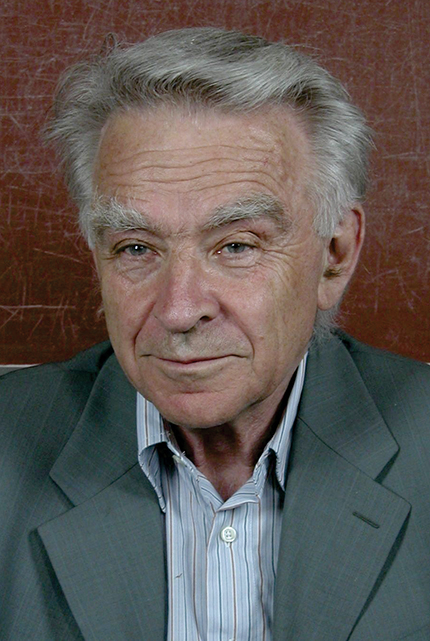Leonid Keldysh
DOI: 10.1063/PT.3.3605
Leonid Keldysh, a world-prominent Russian theoretical physicist, passed away from pneumonia on 11 November 2016 in Moscow. He was one of the most imaginative and influential physicists of the past half century. In addition to developing the concepts that bear his name—including the Keldysh nonequilibrium diagram technique, the Keldysh theory of strong-field ionization, and the Franz–Keldysh effect—he also predicted the electron–hole liquid phase, the Bose–Einstein condensation of excitons, phonon-assisted electron tunneling, and superlattices in semiconductors. Each prediction opened a new field of research.

Leonid Keldysh
N. K. FEDOROV, LEBEDEV PHYSICAL INSTITUTE

Keldysh was born on 7 April 1931 in Moscow. He belonged to a family of prominent mathematicians, including his mother, Lyudmila Keldysh, and stepfather, Petr Novikov, both professors at Moscow State University; uncle Mstislav Keldysh, a key figure in the Russian space program and president of the Russian Academy of Sciences in 1961–75; and brother Sergey Novikov, a Fields Medal recipient.
Following graduation from Moscow State University in 1954, Keldysh joined the theoretical physics department of the P. N. Lebedev Physical Institute, where he worked until the end of his life. His scientific supervisor was Vitaly Ginzburg, and his department head was Igor Tamm, both future Nobel Prize recipients.
Early in his career, in 1957–58, Keldysh predicted an electric-field-induced shift of a semiconductor’s absorption edge, now known as the Franz–Keldysh effect. It turned out to be of paramount importance in the development of a powerful spectroscopic technique for determining the band structure of semiconductors and phonon-assisted electron tunneling in semiconductors. Phonon-assisted tunneling was quickly recognized to be the main tunneling mechanism in silicon and germanium Esaki diodes.
In 1962 Keldysh proposed that spatially modulating a crystal lattice creates artificial band structures in semiconductors. In 1970, heterostructure superlattices were studied by Leo Esaki and Raphael Tsu and became the basis of many optoelectronic devices.
In a 1964 paper that has received 5000 citations, Keldysh developed a powerful formalism, today called the Keldysh nonequilibrium diagram technique, for describing nonequilibrium processes. Introducing a matrix Dyson equation for the time-ordered Green’s functions, along with what is now known as the Keldysh–Schwinger contour, Keldysh generalized the Feynman diagram technique to nonequilibrium processes. Many laser-excited condensed-matter systems are described by the Keldysh formalism. Now a standard tool in theoretical physics, the approach is frequently applied to femtosecond spectroscopy, condensed-matter physics, quantum field theory, and quantum cosmology.
Keldysh’s theory of strong-field ionization, which was published in 1964 and has received 5500 citations, laid the foundation for the field of intense laser radiation interaction with atoms, ions, molecules, and solids. The theory introduced optical tunneling and above-threshold ionization, experimentally observed about 15 years later. The Keldysh parameter determines the boundary between multiphoton and tunneling regimes. Optical tunneling underlies high-harmonic generation and attosecond science. In 2014 the Journal of Physics B celebrated Keldysh’s contribution with a special issue called “Fifty Years of Optical Tunneling.”
Keldysh submitted in 1965 his candidate of science thesis on the theory of nonequilibrium phenomena. But because of his outstanding level of scientific contributions, he was awarded the higher doctor of science degree (similar to Germany’s habilitation).
In 1965 Keldysh and his PhD student Yuri Kopaev introduced the excitonic insulator concept now widely used for understanding the nature of various metal–semiconductor transitions. In 1968 Keldysh and his PhD student Alexander Kozlov predicted the Bose–Einstein condensation of excitons, a hot topic of current experimental research. In the same year, Keldysh predicted that nonequilibrium excitons in highly excited semiconductors would form electron–hole droplets. Keldysh’s idea immediately stimulated intense experimental research that led to the discovery of that new state of matter. In other seminal papers, Keldysh studied the concepts of deep levels in semiconductors, impact ionization, and “phonon wind,” subsequently validated experimentally.
A professor at Moscow State University since 1965, Keldysh established a world-renowned scientific school on nonequilibrium phenomena in condensed-matter physics and nonlinear optics. Of his more than 20 PhD students, 10 were awarded doctor of science degrees and became prominent physicists. From 2004 to 2011, Keldysh held a half-time, tenured professorship in the department of physics and astronomy at Texas A&M University. He served as an editorial board member for many physics journals and from 2009 to 2016 was editor-in-chief of Physics-Uspekhi.
During the challenging period for Russian science following the collapse of the Soviet Union, Keldysh served as director of the Lebedev Physical Institute and head of its theoretical physics department in 1989–94 and as head of the general physics division of the Russian Academy of Sciences in 1991–96. His leadership played a crucial role in preserving the institute and the high standards of Russian science. He was admirably strong and honest. It was impossible to persuade him to accept any decision with which he disagreed.
Among his many awards, Keldysh shared the 1975 Hewlett-Packard Prize of the European Physical Society, the 2011 Eugene Feenberg Memorial Medal, and the 2015 Lomonosov Grand Gold Medal of the Russian Academy of Sciences.
Keldysh neither read other people’s memoirs nor wrote any himself. He believed that what mattered were not the personal life events but the contributions a person left. Leonid Keldysh left us a lot. His name will remain in physics forever through the theories he developed. We will always remember his passion for physics, benevolence and decency, kind smile, and gentle sense of humor.
More about the Authors
Federico Capasso. Harvard University, Cambridge, Massachusetts.
Paul Corkum. University of Ottawa, Ottawa, Ontario, Canada.
Olga Kocharovskaya. Texas A&M University, College Station.
Lev Pitaevskii. University of Trento, Trento, Italy, Kapitza Institute for Physical Problems Russian Academy of Sciences, Moscow.
Michael V. Sadovskii. Russian Academy of Sciences, Ural Branch, Ekaterinburg, Russia.




